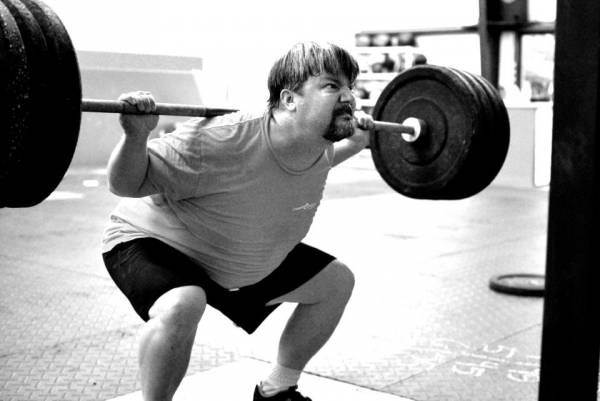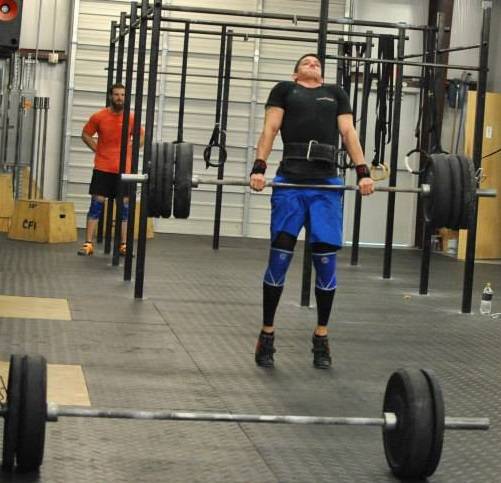Last week we looked at the phenomenon of absolute strength and how it is divided into three components, concentrate, eccentric, and static strength. Although we looked mainly at how this affects the powerlifter, we will now expand our study of strength types to include Olympic lifting and other more dynamic sports.
The type of strength we’re talking about here is referred to by the term speed-strength. This term was coined after translation from various Soviet studies (Matveev, Zatsiorsky, Verkoshansky, etc.) done as far back as the 1950s. In those days in the Western World, absolute strength was all that was considered necessary for success in not only weightlifting, but also in the few other sports where weight training was allowed and tried. The term “speed-strength” roughly refers to the concept of power, or strength expressed under conditions of speed.
The Components of Speed-Strength
Like absolute strength, speed-strength has its components. These are starting strength and explosive strength.
We touched on starting strength in last week’s article. Remember where I mentioned the need for a quick transition between the eccentric and the concentric phases of a lift? That is fine for a starting point, but we need to be more specific to fully understand what is happening. At the very instant where eccentric changes direction and becomes concentric it is of utmost importance that the maximum number of muscle fibers are recruited. If you know your physiology, then you know that in any motor movements not every muscle fiber is recruited, only enough to get the job done. When doing heavy lifting movements, you want as many fibers as possible to be fired instantaneously to get the movement started.
The Firing of Muscle Fibers
The human being is naturally lazy in that he or she will only recruit as many fibers as considered necessary. And if you live a fairly sedentary lifestyle, you will then become accustomed to low recruitment and this will show up in your observed strength expression. Fortunately, this recruitment property can be greatly affected by training. The more you train with heavy weights, then the more your body learns to automatically recruit more and more fibers. In fact, much of the progress made by novices is merely that of learning how to recruit more and more fibers. In this way you don’t need more muscle fibers or bigger muscle fibers, you just need to recruit more of the ones you do have. That is why new trainees can get very strong, very fast without appreciably adding to their body weight. Of course the development of technique is also responsible for a lot of initial novice improvement, but the additional recruitment cannot be ignored.
And don’t forget as mentioned in last week’s article there is an inhibition factor involved. The human mind does not like to recruit more fibers than necessary. This tendency has to be trained out of the human organism. We do this by training heavier and heavier so that it forces us to recruit more fibers, and we also simply get used to the idea of the extra exertion. We still have to fight the tendency to be lazy, especially those of us with more risk-averse personalities. The risk takers will generally take over the podium as we advance further and further in the sport, but even risk-averse people can become much stronger than they were when they started out.
Explosive Strength
Now let’s talk about explosive strength. This factor must be present if an initial recruitment effort is to be sustained over the full course of the motor movements. Someone who is weak in explosive strength might have good starting strength, but be unable to carry through. We’ve all seen squatters who show plenty of strength at the bottom of the knee bend, but then power out during the middle of the lift. What you want is somebody who can show power all the way through the lift.

This is especially important in Olympic lifting and most events in track and field. Let’s look at a typical leg extension movement, such as the power clean. You do not need a lot of absolute strength when lifting the bar off the floor. Everyone’s deadlift is much higher than his or her power clean. What you really need is explosive strength. This shows most obviously when your leg extension goes beyond ninety degrees. The faster you go from ninety to 180 degrees, the more you are going to power clean. Those fibers will have to keep firing all through that portion of the lift.
The Difference Between Powerlifting and Weightlifting
In some of the philosophical discussions I’ve had post-competition with other observers, I have come to the conclusion that the main difference between weightlifting and powerlifting is which side of the ninety-degree knee extension they emphasize. Powerlifters emphasize opening the acute angles, as at the bottom of the squat or a bench press, i.e. less than ninety degrees. The name of the game is to start opening that angle. Absolute strength is key here, speed-strength not quite so much. In weightlifting, the emphasis is on the final opening up of that angle, i.e. from ninety to 180 degrees. There, explosive strength rules. (As an aside I realize explosive strength still plays a role in powerlifting, an important role, but that discussion will wait for another day.)
The Importance of Follow-Through
Just as I said last week that the proportion of strength displayed in the various phases of absolute strength can vary, so also can speed-strength and also when comparing speed-strength to absolute strength. For example, a lifter can have good starting strength and not-so-good explosive strength. The opposite is not likely. It is hard to imagine a situation where a person is very explosive, but not so good at recruiting the fibers. It just isn’t possible.

So the job of weightlifters and other explosive movement athletes in their training is to recruit as many fibers is possible and keep them recruited until the end of the effort. In other sports this is often referred to as follow-through. A weightlifter has to complete his pull, a football punter has to get that foot high during kicks, a boxer tries to punch through, not just at, an opponent, and so on.
The Roles of Absolute Strength and Speed-Strength in Sport
As you’ve probably imagined by now it is also possible to have absolute strength and speed-strength out of whack with one another with regard to the needs of your particular sport. The history of weightlifting is full of examples of people who had tremendous absolute strength, but could not harness it for the power demands of competition. Powerlifters are often criticized by weightlifters for not displaying enough speed-strength. That criticism is only valid if the powerlifter is trying to Olympic lift. Each sport has different requirements.
This is not to say that absolute strength is not important in the explosive sports. It is. In fact, without a good background of absolute strength it will not be possible to express any degree of speed-strength. Absolute strength comes first. Explosive strength is built on top of that. That is why periodization plans generally move in that direction.
An example I like to point out here is in boxing. Light heavyweight Bob Foster had good speed-strength in his punches, but at 6’3″ and 175lbs, he was a little short in absolute strength. Compare him to George Foreman, the same height and 225lbs in his prime, who had excellent starting strength and explosive strength. This extra absolute strength made him much more devastating. Foster made several attempts to fight at heavyweight, but he just did not have enough absolute strength to do much damage to the bigger opponents he then had to face. But when fighting 175-pounders, his strength was adequate to be considered one of the all-time greats at that division. (It should be added that Foreman’s greater size also allowed him to more easily absorb heavyweight punches than the bone-rack Foster was able to endure. Success factors are always multidimensional.)
The next article in this series will be on speed endurance. And if you missed part one, be sure to read about the intricacies of absolute strength.
Photos courtesy of CrossFit Impulse.






